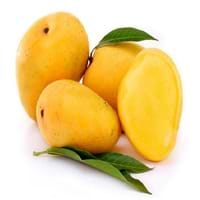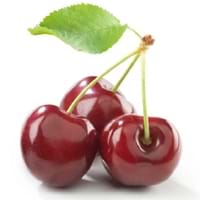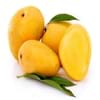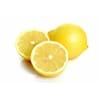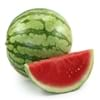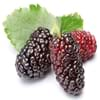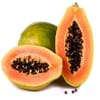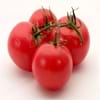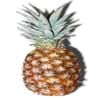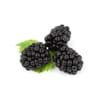Health Benefits
Cancer prevention, Cures fatigue, Heart care, Prevents strokes
Arthritis prevention, Cancer prevention, Gout treatment, Heart care, Muscle pain relief, Regulation of heart rate, Treatment of alzheimer's disease
General Benefits
Anti oxidant properties, Boosts immune system, Controls blood pressure, Digestive aid, Improves eye vision, Maintains healthy cholesterol level
Anti oxidant properties, Anti-inflammatory properties, Controls blood pressure, Cures headache, Sore throat treatment
Skin Benefits
Anti-aging benefits, Brightens and lightens complexion, Skin cleansing, Skin rejuvenation, Treatment of acne, Treatment of blackheads, Treatment of dark spots
Anti-aging benefits, Brightens and lightens complexion, Skin rejuvenation, Treatment of dark spots
Hair Benefits
Good conditioner, Prevents hair loss, Treatment of dandruff
Acts as moisturizer, Protects hair, Regulates hair growth, Rejuvenates scalp
Allergy Symptoms
Abdominal pains, Breathing difficulty, Diarrhea, Runny nose, Sneezing, Swelling of mouth, tongue or lips, Watery eyes
Anaphylaxis, Breathing difficulty, Fainting, Hives, Itching, Nasal congestion, Nausea, Swelling of mouth, tongue or lips, Tingling sensation in mouth, Vomiting, Wheezing
Side Effects
Increase in blood sugar level, Diarrhoea, Weight gain
Abdominal cramps, Allergic reaction, Bloating, Intestinal gas
Best Time to Eat
Don't consume at night and before bed, Eat the fresh ones, avoid mixing with any other foods, don't eat after meal., Morning time (before lunch)
Best if taken as a breakfast (or empty stomach), As a snack in the late afternoon, Don't eat after meal, Morning time (before lunch)
Vitamin B5 (Pantothenic Acid)
Vitamin C (Ascorbic Acid)
Vitamin K (Phyllochinone)
Phytosterol
Not Available
Calories in Fresh Fruit with Peel
Not Available
Calories in Fresh Fruit without Peel
Not Available
Type
Tree fruit
Tree fruit
Season
Spring, Summer
Summer
Varieties
Alphonso, Valencia Pride, Badami, Chaunsa, Nam Dok Mai, Glenn, Sindhri, Madame Francique, Kesar and Keitt
Vandalay, Stella, Tehranivee, Sonata, Whitegold, Symphony, Blackgold, Sunburst, Lapins, Skeena and Sweetheart
Color
Orange, Red, Yellow
Red
Origin
Southern Asia
Europe, Western Asia
Soil Type
Clay, Loam, Sand
Sandy
Climatic Conditions
Humid, Warm to hot climate
Cold
Facts about
- A mango tree can bear fruits even after the age of 300 years.
- Height of a mango tree can be as high as 100 feet.
- In India, mango is known as a symbol of love. Also, a mango basket is considered as the sign of friendship.
- The word cherry is derived from the Turkish town of Cerasus.
- In Oliver, British Columbia, a pie of 39,683 pounds was baked which holds the record of biggest cherry pie.
- National cherry cheese cake day is on April 23.
Top Producer
India
Turkey
Other Countries
Bangladesh, Brazil, China, Indonesia, Mexico, Nigeria, Pakistan, Philippines, Thailand
Austria, Chile, China, France, Germany, Greece, Iran, Italy, Poland, Romania, Russia, Serbia, Spain, Syria, Ukraine, United States of America, Uzbekistan
Top Importer
United States of America
Russia
Top Exporter
Mexico
Poland
Botanical Name
Mangifera Indica
Prunus avium
Synonym
Not Available
Not Available
Subkingdom
Tracheobionta
Tracheobionta
Division
Magnoliophyta
Magnoliophyta
Class
Magnoliopsida
Magnoliopsida
Family
Anacardiaceae
Rosaceae
Species
M. indica
P. avium
Generic Group
Cashew
Rose
Difference Between Mango and Sweet Cherry
We might think that Mango and Sweet Cherry are similar with respect to nutritional value and health benefits. But the nutrient content of both fruits is different. Mango and Sweet Cherry Facts such as their taste, shape, color, and size are also distinct. The difference between Mango and Sweet Cherry is explained here.
The amount of calories in 100 gm of fresh Mango and Sweet Cherry with peel is Not Available and 63.00 kcal and the amount of calories without peel is 60.00 kcal and Not Available respectively. Thus, Mango and Sweet Cherry belong to Low Calorie Fruits and Low Calorie Fruits category.These fruits might or might not differ with respect to their scientific classification. The order of Mango and Sweet Cherry is Sapindales and Rosales respectively. Mango belongs to Anacardiaceae family and Sweet Cherry belongs to Rosaceae family. Mango belongs to Mangifera genus of M. indica species and Sweet Cherry belongs to Prunus genus of P. avium species. Beings plants, both fruits belong to Plantae Kingdom.
